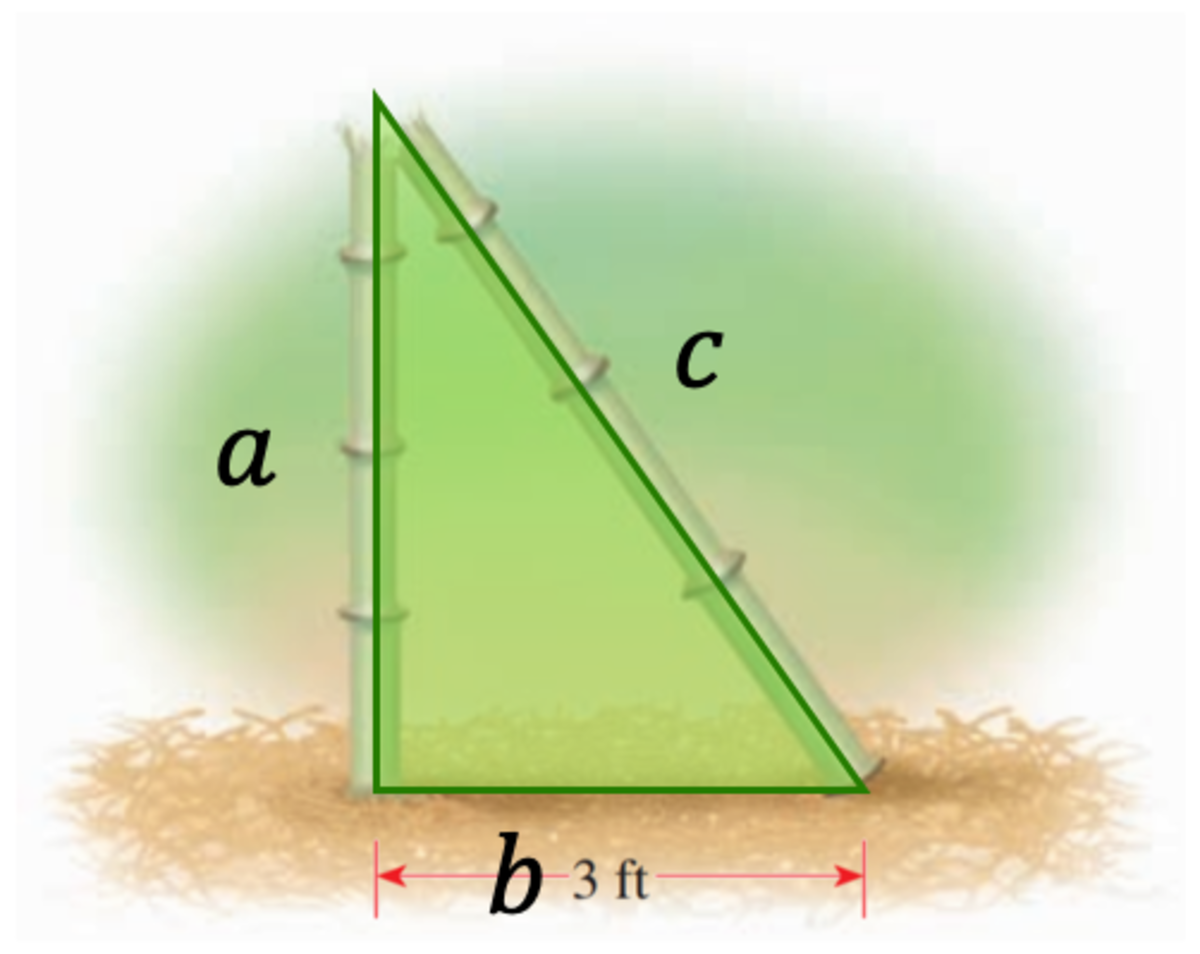Ancient Chinese Problem
This problem is taken from a Chinese mathematics textbook called Chui-chang Suanshu, or Nine Chapters on the Mathematical Art, which was written about 250 B.C.
A vertically standing 1 0 f t -long bamboo stem is broken in such a way that its tip touches the ground 3 f t from the base of the stem, as shown in the figure. What is the height of the break? (Give your answer to two decimal places.)
The answer is 4.55.
This section requires Javascript.
You are seeing this because something didn't load right. We suggest you, (a) try
refreshing the page, (b) enabling javascript if it is disabled on your browser and,
finally, (c)
loading the
non-javascript version of this page
. We're sorry about the hassle.
4 solutions

Let the height where the stem is broken be h f t from the ground. Then the length of the top part of the broken stem is 1 0 − h f t . By Pythagorean theorem , we have:
h 2 + 3 2 h 2 + 9 2 0 h ⟹ h = ( 1 0 − h ) 2 = h 2 − 2 0 h + 1 0 0 = 9 1 = 2 0 9 1 = 4 . 5 5 f t
Surely they didn’t use the “ft” in ancient China?
True but it's given here for convenience.
This problem can be solved using the Pythagorean Theorem .
For the triangle made by the bamboo sticks and the ground, let's name the sides a , b , and c . An image is shown for reference at the end of this explanation.
Here's what we know:
-
b = 3 ft
-
a + c = 1 0 ft
The Pythagorean Theorem states that, for a right triangle with side lengths a , b , and c as shown in the attached image:
a 2 + b 2 = c 2
In order to solve the above equation, we need to rewrite a in terms of c , or vice-versa. I chose to solve for a in terms of c ..
From a + c = 1 0 , we can deduce that a = 1 0 − c . So, plugging this as well as b = 3 into the formula gives:
( 1 0 − c ) 2 + ( 3 ) 2 = c 2
This comes out to c = 1 0 9 / 2 0 = 5 . 4 5 .
So, now that we know the values of c and b , we can solve for a .
If a = 1 0 − c , then a = 1 0 − 5 . 4 5 , which means a = 4 . 5 5 .
So, the height is 4.55 ft .

First and foremost , Have a look at the bamboo stick . We know that the length of the original unbroken bamboo stick is 10m . So the break and the hypotenuse sum to 10m.
The hypotenuse will obviously be longer than the break so the bamboo stick must have been broken assymetrically (not symmetrically)
Let's call the length of the break as xm. then the hypotenuse automatically becomes (10-x).
So now let's reflect this in the triangle
We can now use the Pythagoras Theorem and solve for x
Hope this helped